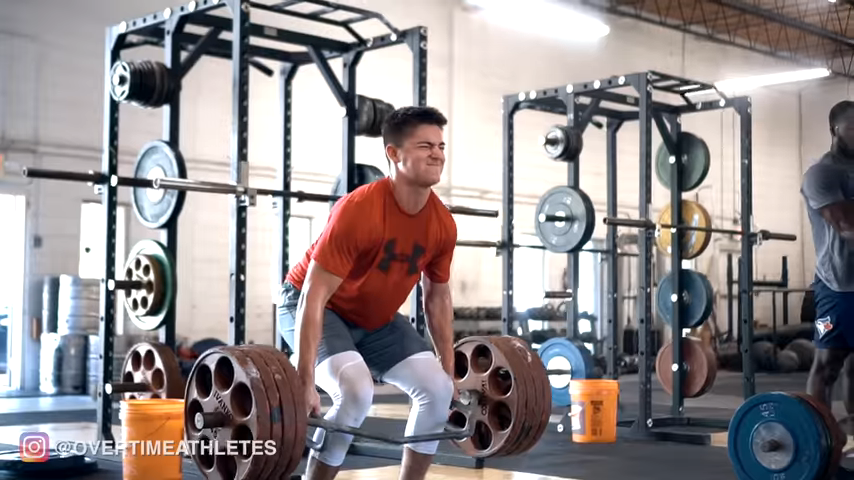Change of Direction Training for Football
Today, I want to share a change of direction workout I did with my football guys the other week. It’s important that I let you know from the jump this change of direction workout is designed to raise the foundational attributes of change of direction.
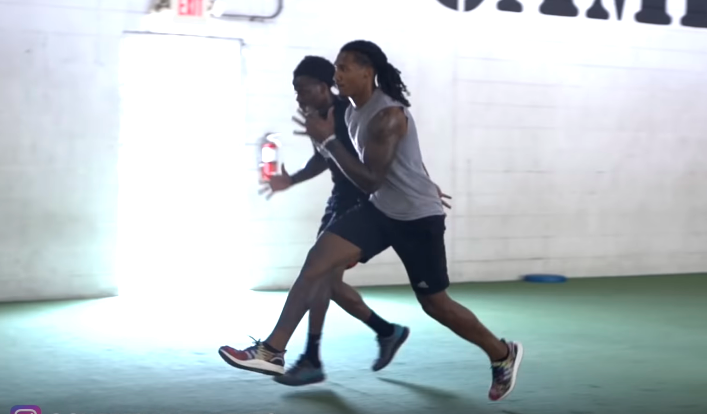
These attributes include inversion/eversion of the ankle and adduction/abduction of the hip. If these two physical traits aren’t elevated, and you try to change directions at high speeds, chaos can occur.
Injuries in the form of ankle sprains, knee tears, and more will hit you faster than a NFL combine 40 yard dash.
Good news is, this workout is foundational. Meaning, if you follow it, you’re building traits that will set the stage for rapid change of direction later.
With all of that said, let’s jump into the change of direction workout for football players.
Forward Pogos
At the beginning of the season, I like to build the force production ability of the athlete from the ground up. One of my favorite tools to do this is low level plyometrics in the form of pogos, squat jumps and lunge jumps.
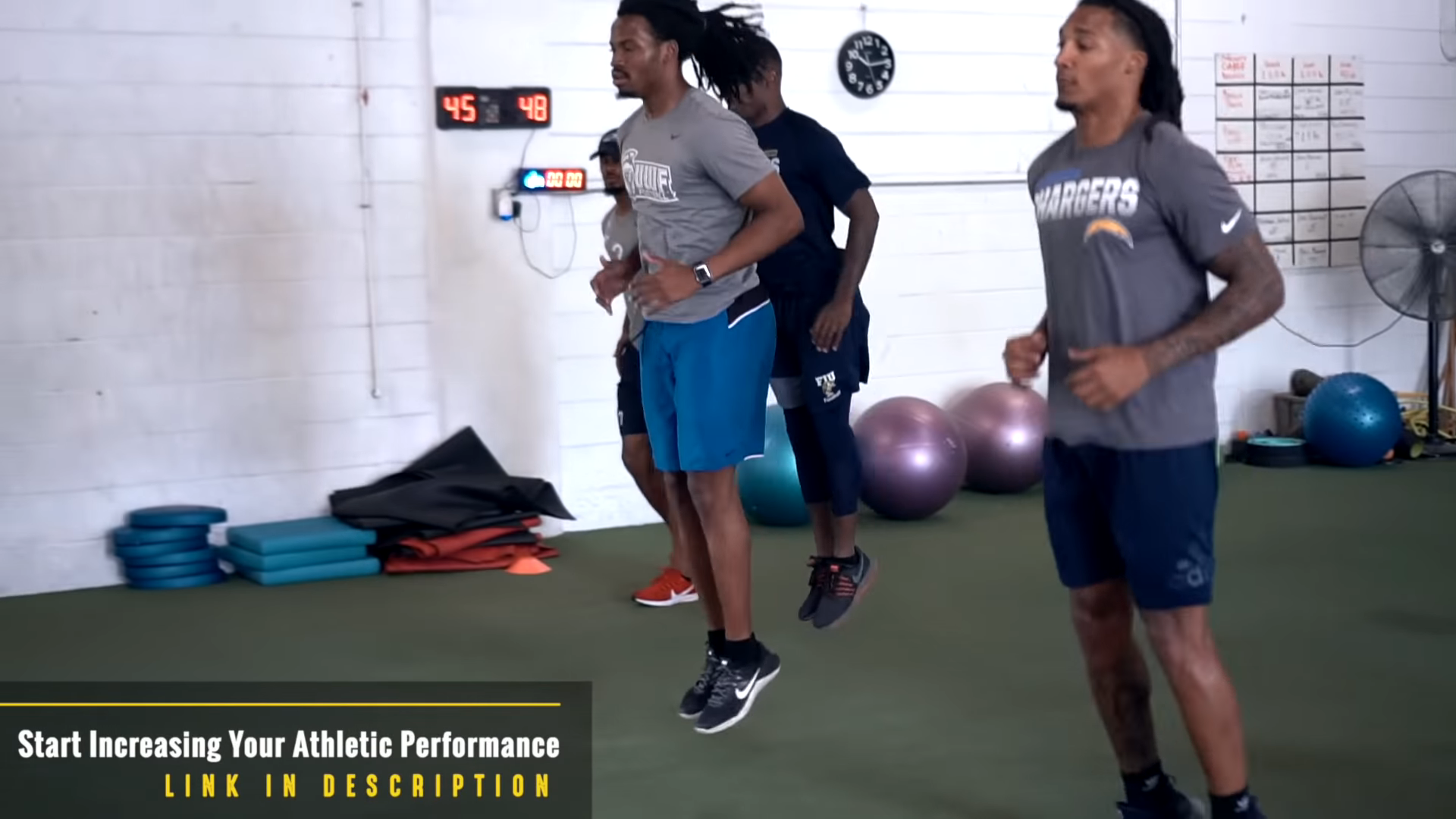
Here, I’m using forward pogos to build the capacity of the ankle to propel the athlete forward. This will help you accelerate faster after decelerating to change directions.
Single Leg Forward Pogos
This movement is used for the same reason as forward pogos, except it focuses on one leg at a time. Additionally, it builds stability in the ankle, knee, and hip of the leg that’s being used
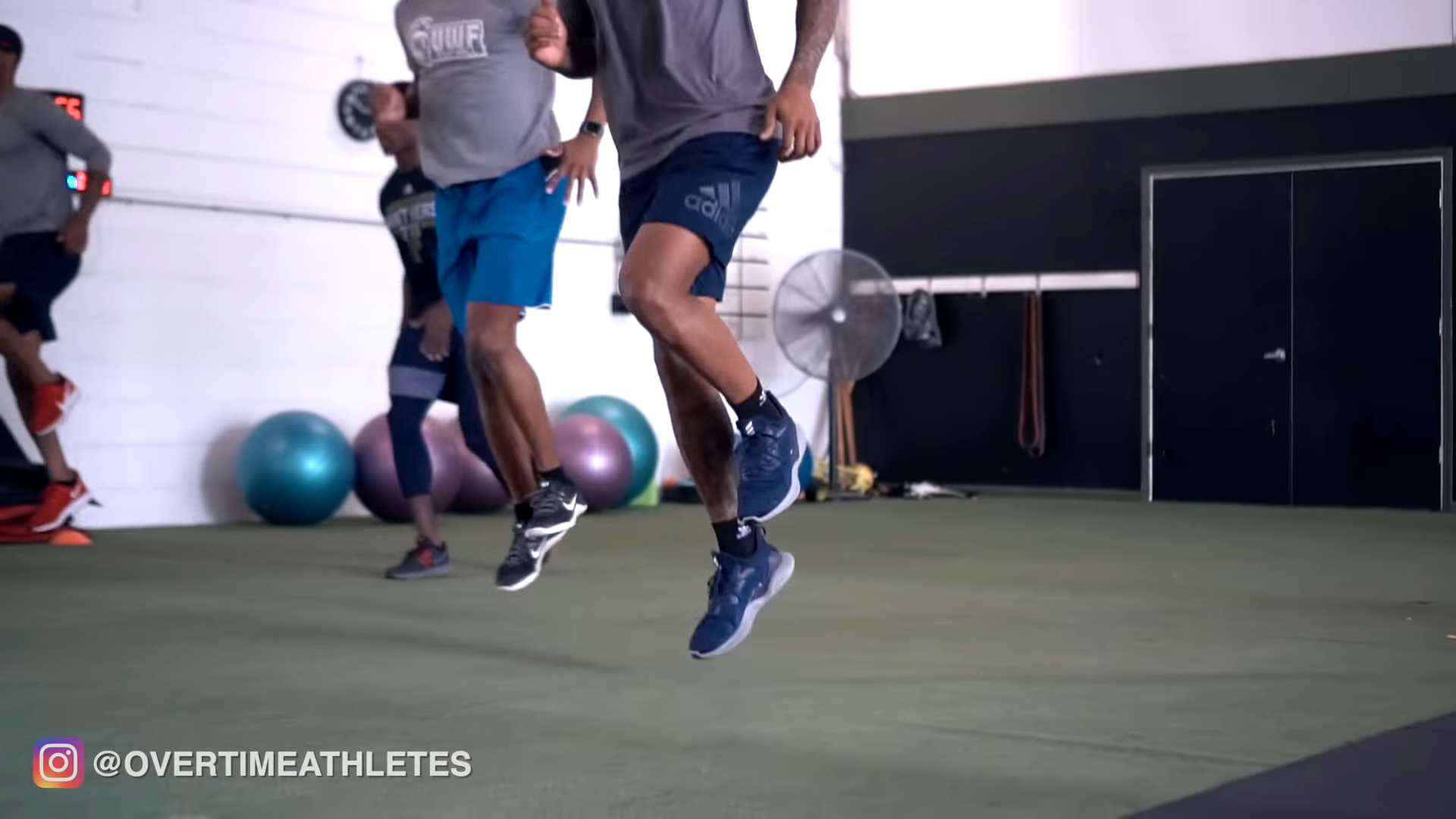
Since change of direction and agility require dynamic balance, stability will be a key factor in your ability to stop on a dime and explode in the other direction.
Lateral Pogos
Lateral Pogos work the ankle’s ability to produce force laterally. Above, I spoke of inversion/eversion of the ankle being key. That’s what we’re working here at a high level.

With this movement, you want to focus on getting as many jumps in 10 yards as you can. That means you’re emphasizing height on your jumps, not distance.
Lateral Line Hops
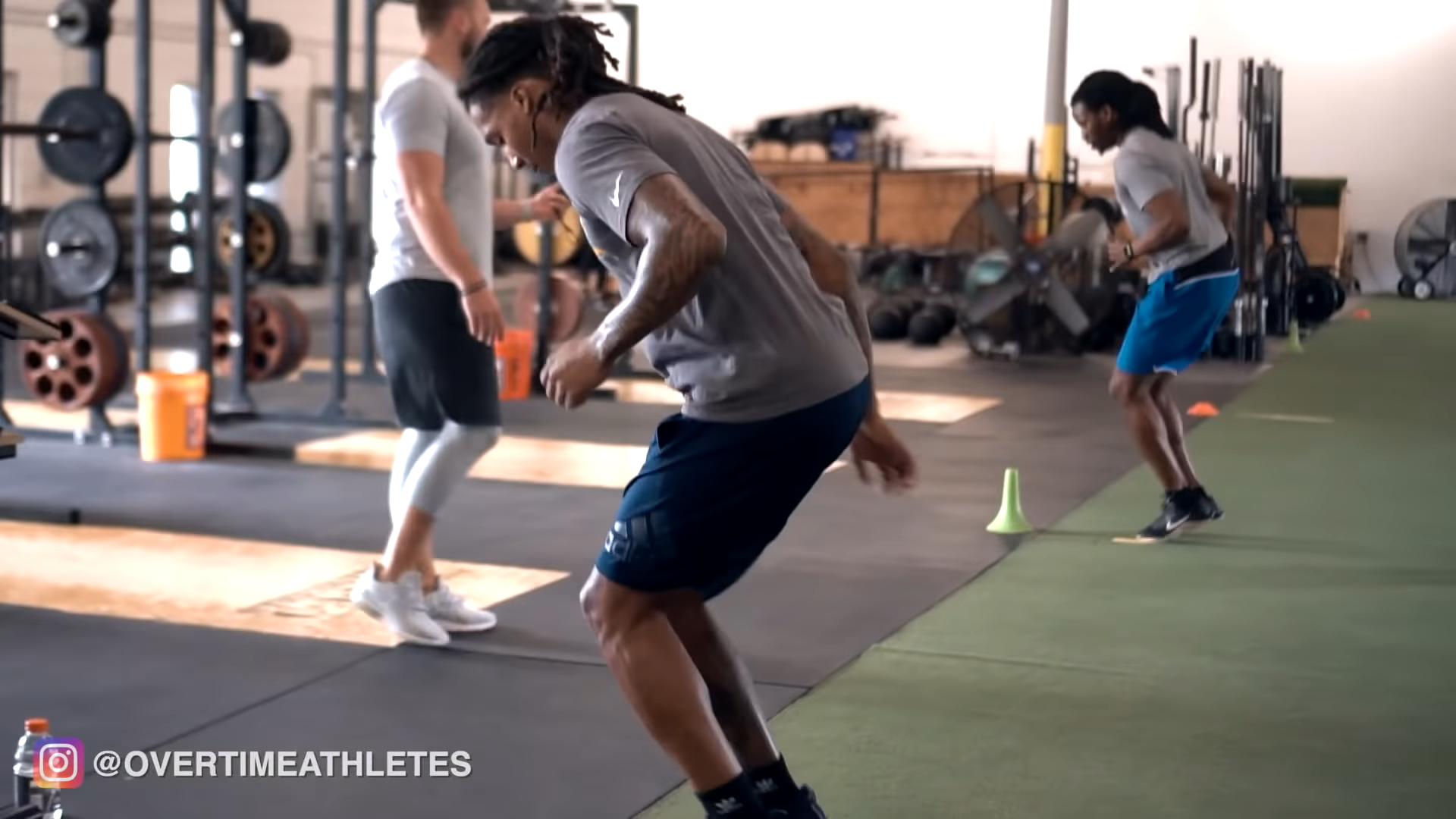
Lateral Line Hops are another drill that work on inversion/eversion. With this drill, you want to focus on getting as many touches on each side of the line as you can in 10 seconds. Additionally, you want to maintain control of your body. Avoid moving forward and backwards when jumping over the line, and try and keep the distance of your hops even.
Single Leg Lateral Line Hops
The Single Leg Lateral Line Hop raises the intensity of the lateral line hop. It works both inversion/eversion of the ankle, as well as abduction/adduction of the hip. It also requires stability in the working leg.
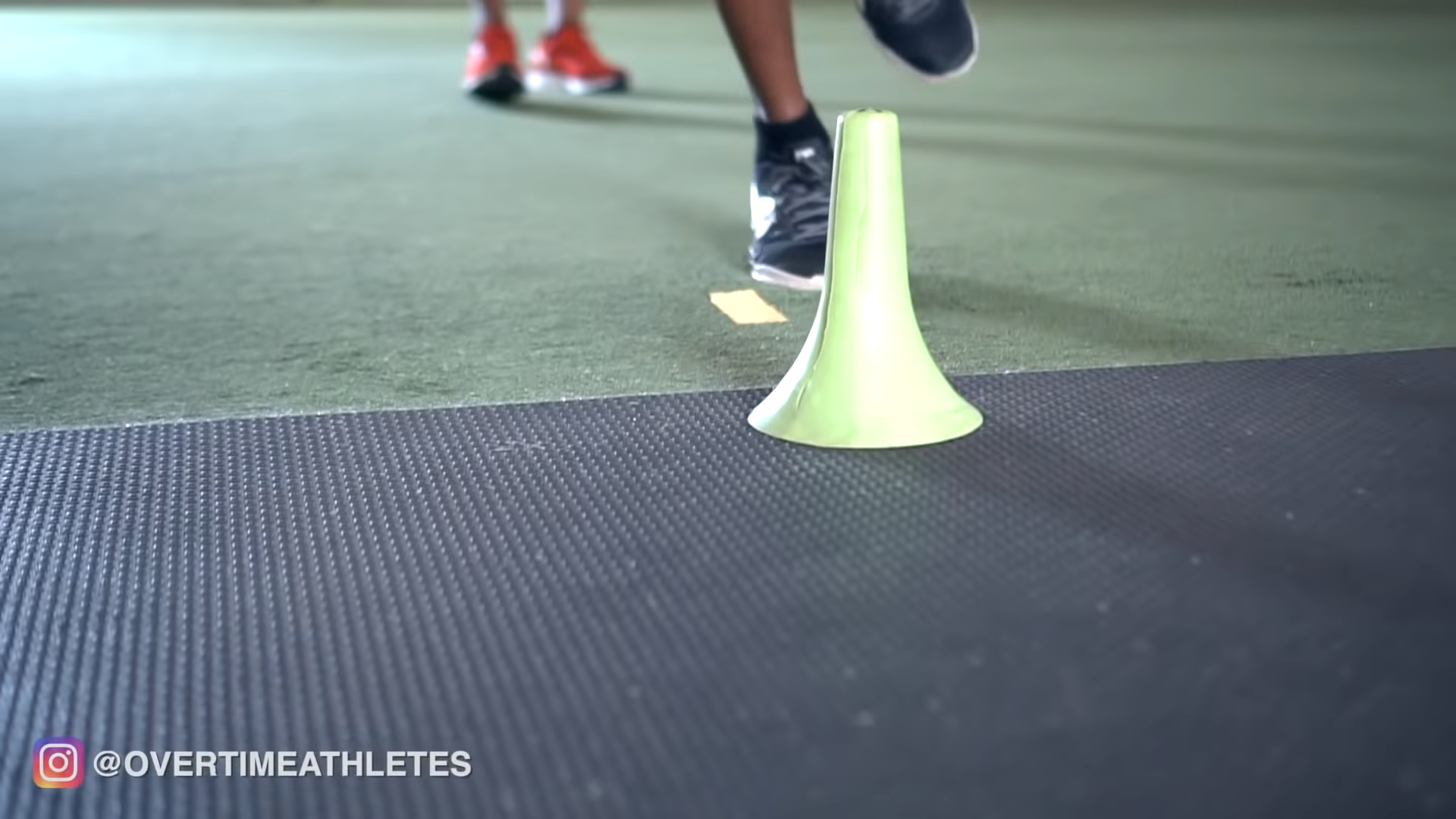
The same rules that apply to lateral line hops apply here: Get as many touches as you can in hte allotted time, and maintain control of your body.
Single Leg Broad to 90 Degree Jumps
The Broad to 90 Degree Jump is a single leg broad jump that quickly transitions to a lateral jump. Here, we’re really trying to shorten the transition phase, or the time between your single leg broad jump to lateral jump.

This will help you lower the time between your deceleration and acceleration phase of changing directions.
Reactive Skaters
Reactive Skater jumps are another movement to shorten your transition while changing directions. Here, you want to emphasize height as well as distance. You’ll also want to emphasize a short ground contact time, even over the distance you jump.
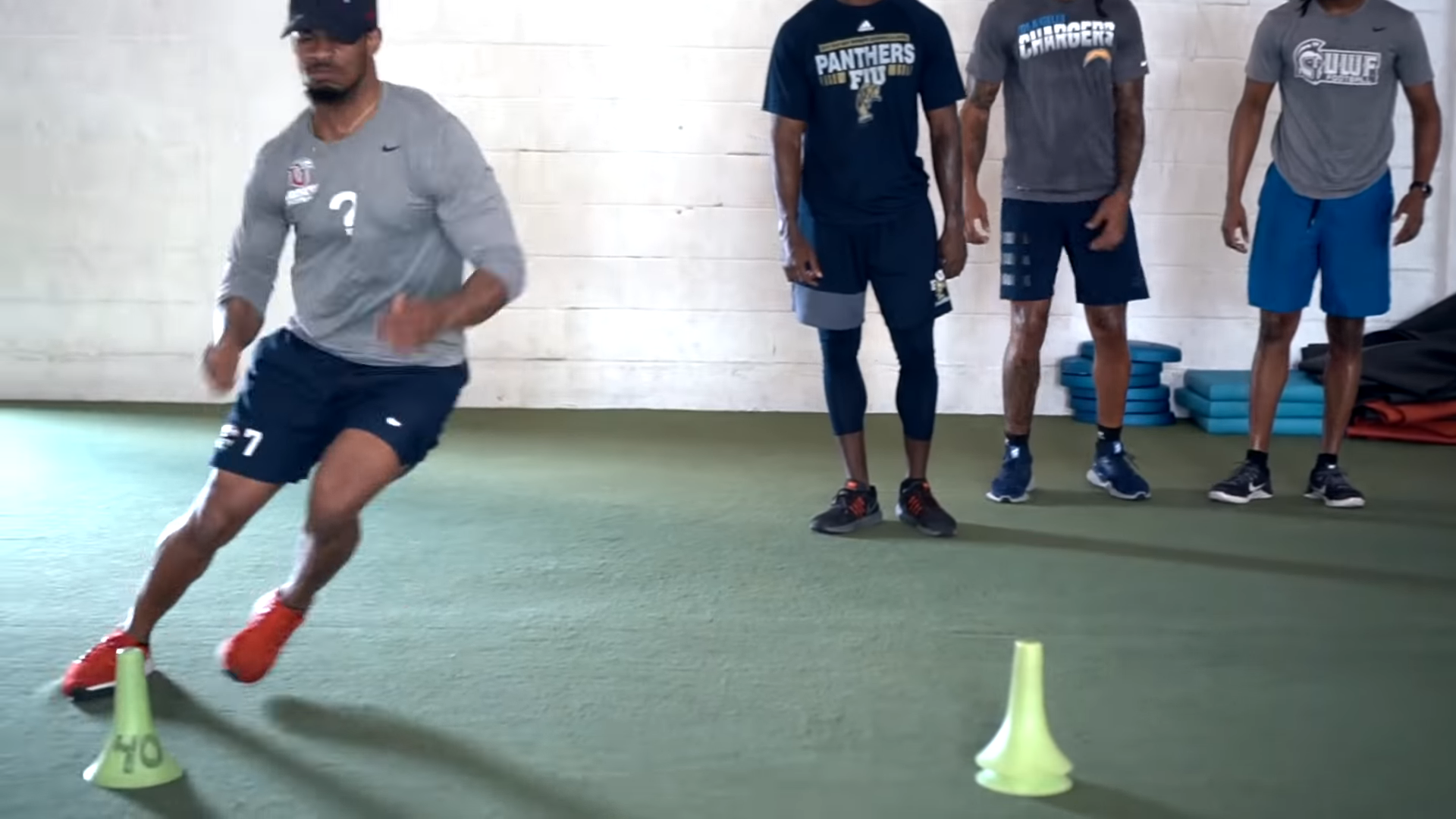
In fact, you should start with a short lateral jump and gradually build up as you get more proficient at this drill.
Skater Jumps to Cone

With this variation of the skater jump, we’ll slow things down. With this move, you want to get up and out as much as you can. When you land on one leg, you want to stick the landing, hold for one second, then proceed to your next jump. This move develops your body control and stability as well as your lateral explosiveness.
Continuous Skater Jumps with Contralateral Reach (w/ Med Ball)
This variation of the skater jump has the athlete staying low and reaching with his opposite hand to touch a cone. This works to shorten your ground contact time as well as develops your body control.
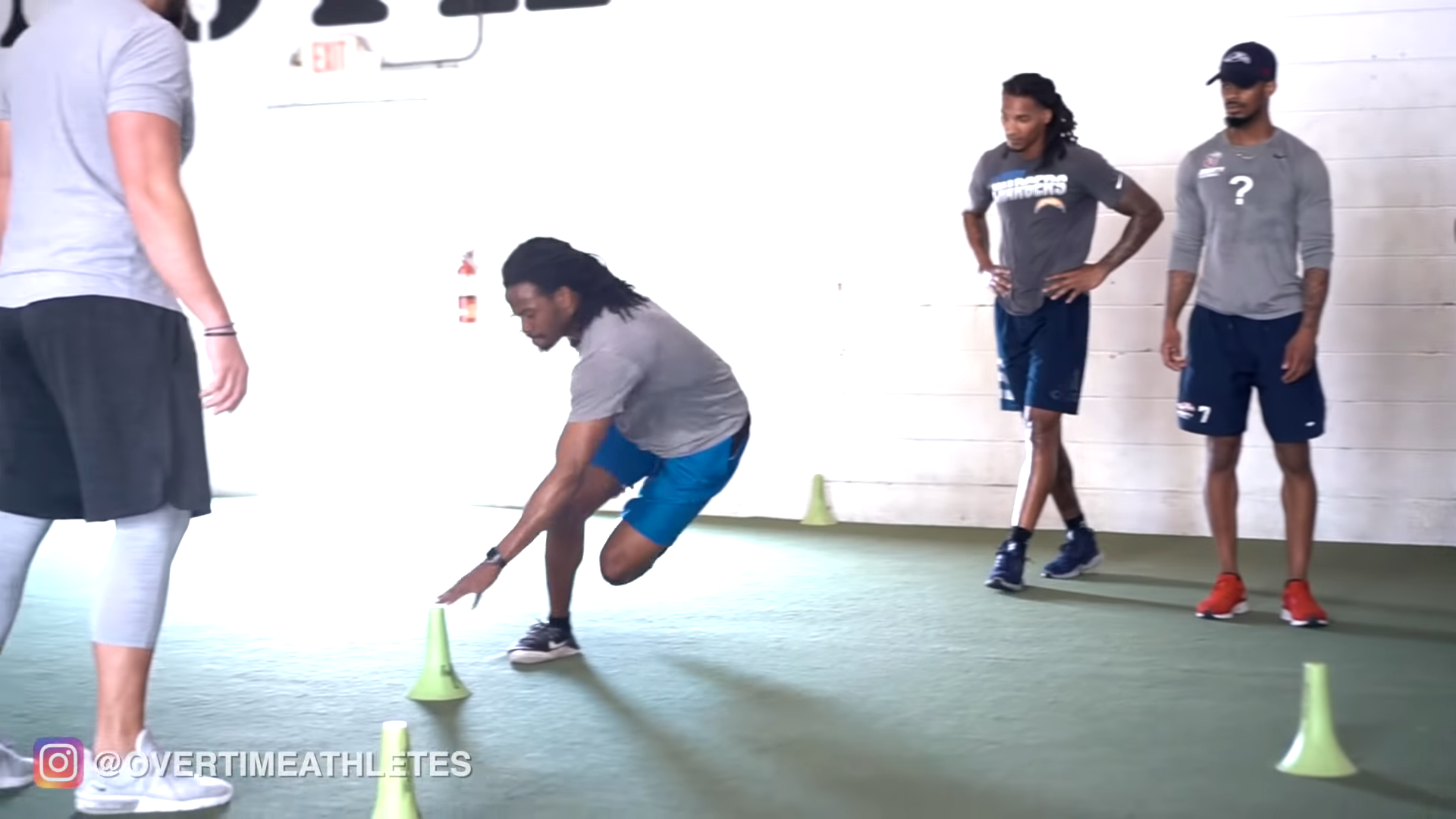
Once you get good at this drill, you can perform it with a med ball for more of a challenge.
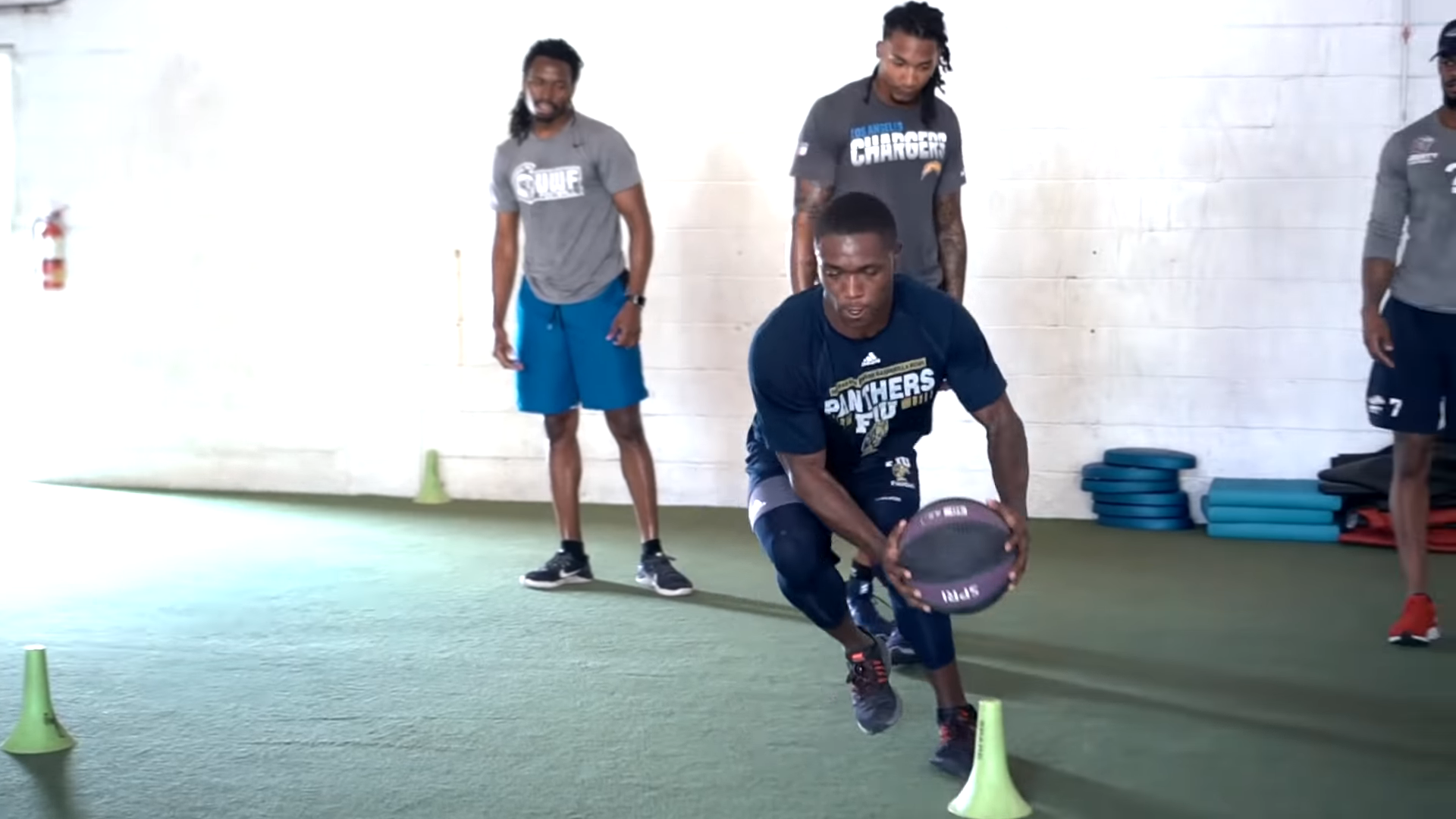
More Posts to Boost Your Athletic Performance
If you’ve read this far, I know that you’re serious about your performance. Below, I’m going to present you with a few more blog posts that will support you in enhancing your athletic performance:
-
 Best Linear Speed Drills for Superior Speed [Pt. 2] March 2, 2020
Best Linear Speed Drills for Superior Speed [Pt. 2] March 2, 2020 -
 The Truth About Speed January 24, 2020
The Truth About Speed January 24, 2020 -



